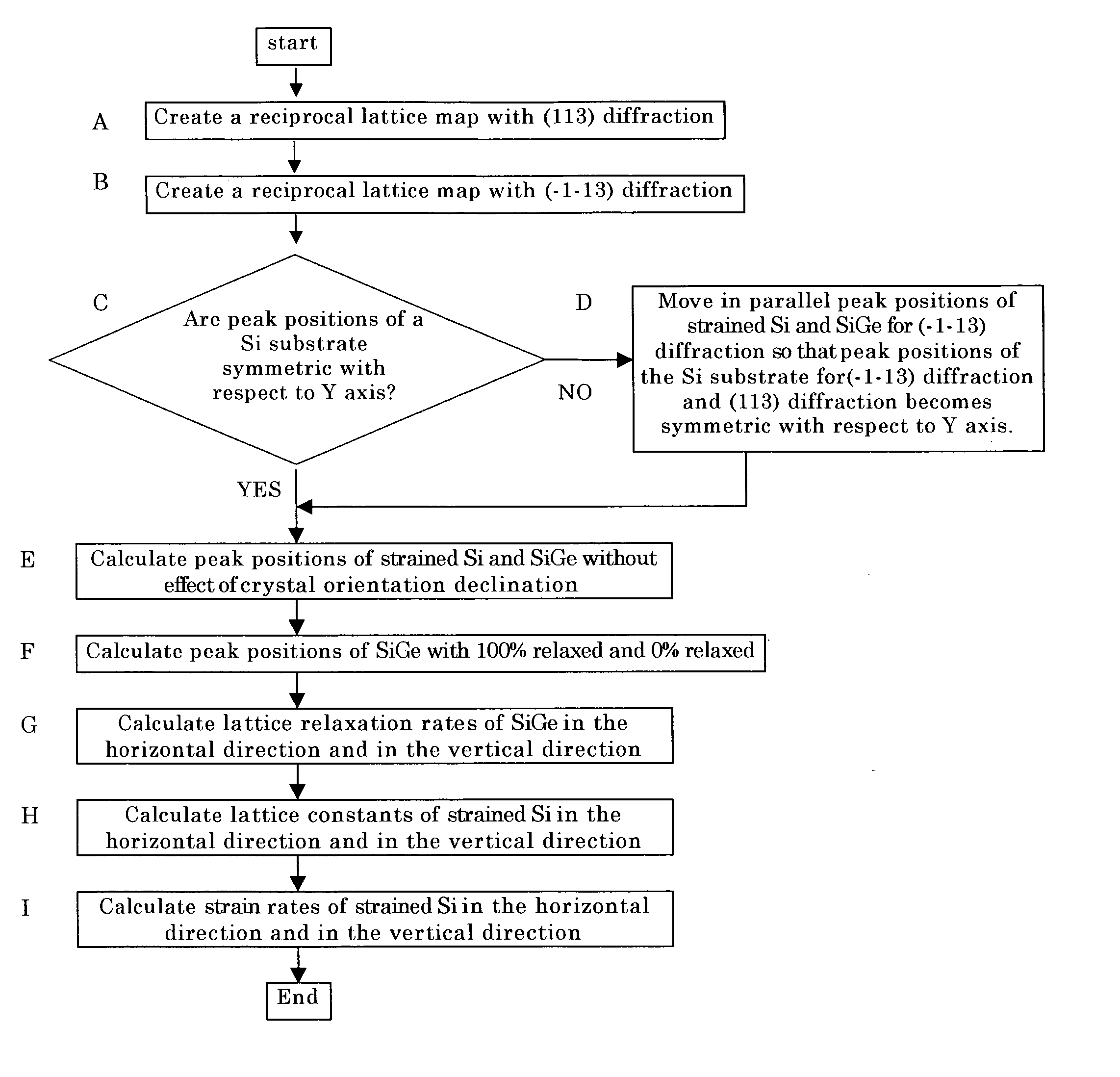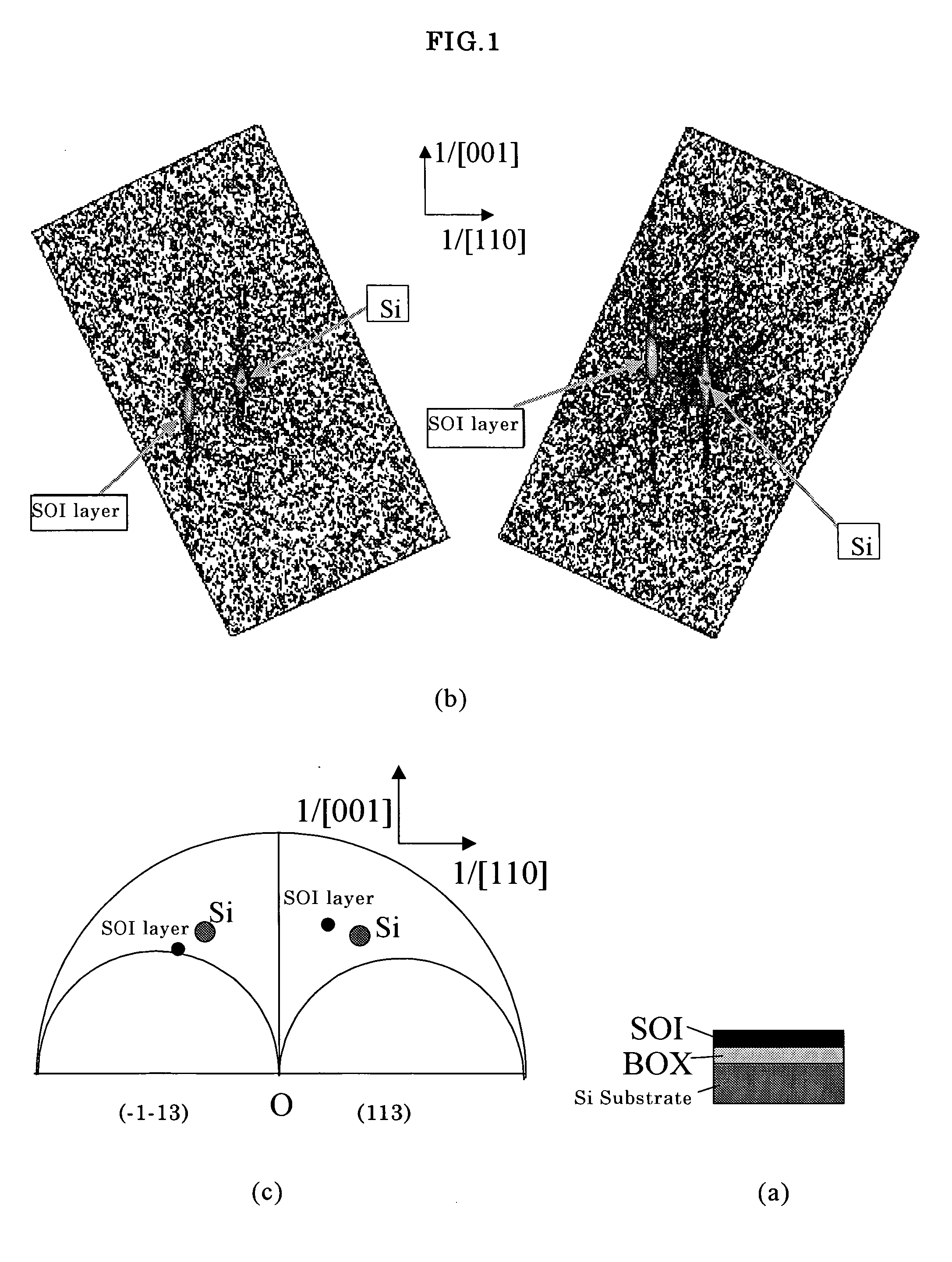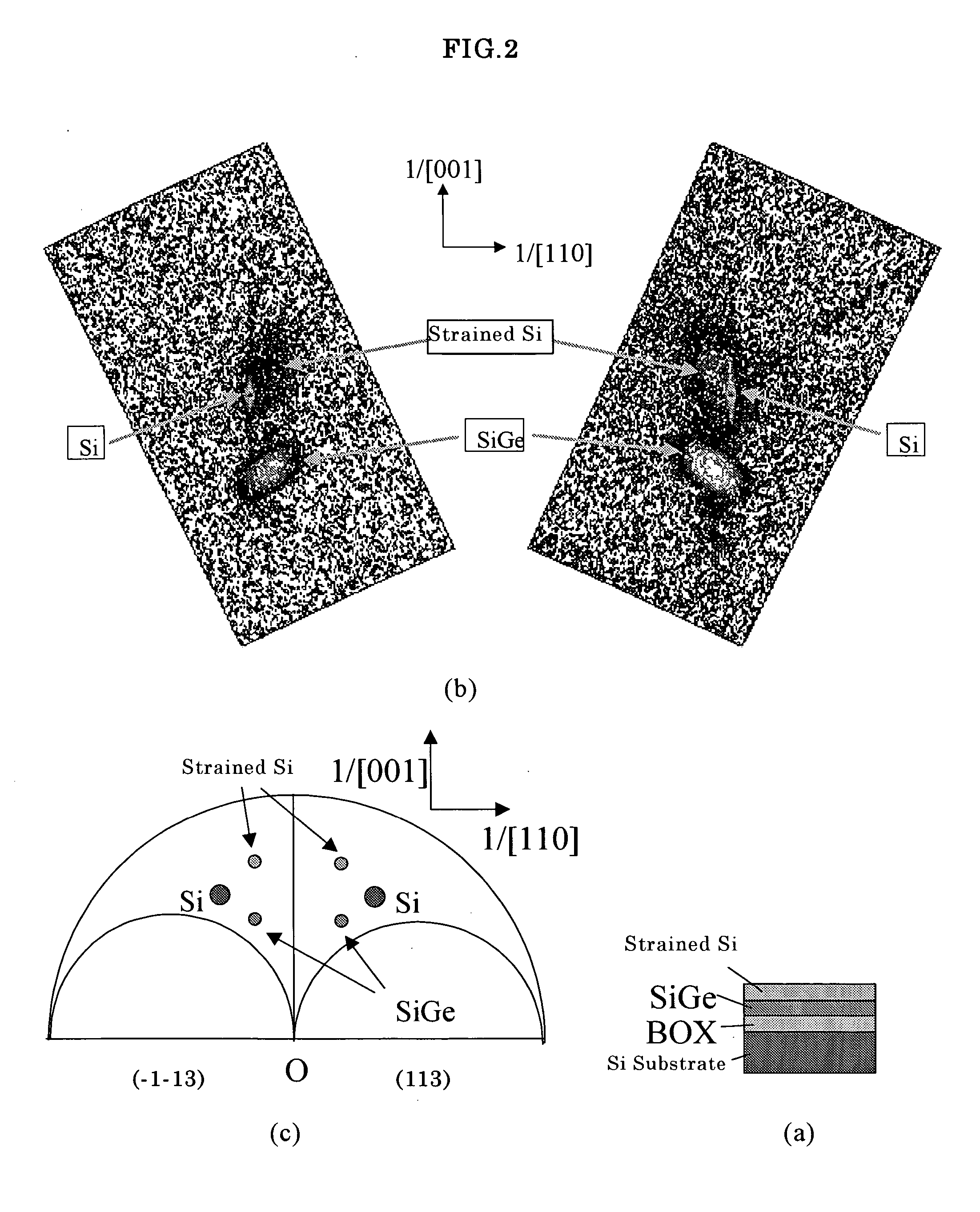Method for measuring an amount of strain of a bonded strained wafer
a strain measurement and strain measurement technology, applied in the direction of individual semiconductor device testing, semiconductor/solid-state device testing/measurement, instruments, etc., can solve the problem of inability to obtain inability to separate and measure the amount of strain, and inability to achieve accurate strain strain of strained si layer. the effect of tim
- Summary
- Abstract
- Description
- Claims
- Application Information
AI Technical Summary
Benefits of technology
Problems solved by technology
Method used
Image
Examples
experiment 1
(Experiment 1)
[0050] By using two silicon single crystal wafers with a 200 mm diameter, p-type, and crystal orientation of , there is prepared a bonded SOI wafer based on a Si substrate which has a 110-nm thickness of an SOI layer and a 200-nm thickness of a buried oxide film layer (Buried Oxide, hereinafter, referred to as a BOX layer) and which is produced according to smart cut (a registered trademark) method. And measurement of a reciprocal lattice space map of a (113) diffraction plane and a (−1−13) diffraction plane was performed by an X-ray diffraction apparatus (manufactured by Philips Co. Ltd.).
[0051]FIG. 1(a) is a section schematic view of the measured SOI wafer. (b) is a reciprocal lattice space map thereof. (c) is a schematic view showing diffraction strength peak positions on the reciprocal lattice space map. In addition, in the reciprocal lattice space map, an axis in the horizontal direction is 1 / [110], an axis in the vertical direction is 1 / [001]. From the reciproca...
experiment 2
(Experiment 2)
[0055] By using silicon single crystal wafers with a 200 mm diameter, p-type, and crystal orientation of , an SGOI wafer (strained Si / SiGe / BOX / Si substrate) with a 20% Ge concentration of a SiGe layer, a 40-nm thickness of the SiGe layer, and a 150-nm thickness of a BOX layer was produced according to a SIMOX method and an oxidation-concentration method. And measurement of reciprocal lattice space maps of a (113) diffraction plane and a (−1−13) diffraction plane was performed with X-ray diffraction apparatus in the same manner as Experiment 1.
[0056]FIG. 2(a) is a section schematic view of an SGOI wafer. (b) is a reciprocal lattice space map thereof. (c) is a schematic view showing peak positions on the reciprocal lattice space map. In addition, an axis in the horizontal direction of the reciprocal space map is 1 / [110], an axis in the vertical direction thereof is 1 / [001]. From the reciprocal lattice space map, peak positions for the SiGe layer and peak positions for t...
example 1
[0083] As a sample 1 for measuring a lattice relaxation rate of a SiGe layer, production of an SGOI wafer using the oxidation-concentration method was performed. On a bonded SOI wafer with a 200-mm diameter produced by smart cut (a registered trademark) method, a SiGe layer was produced at a 20-% Ge concentration at a 40-nm thickness, and then Ge was diffused into the SOI layer by performing dry-oxidation at a temperature of 1000° C. or more, and therewith the SOI layer (which becomes a SiGe layer after the oxidation-concentration step) was thinned, then an oxide film on its surface is removed by using a HF solution, and thereby forming a SiGe layer with a 20-% Ge concentration and a 40-nm thickness on a BOX layer. At this time, the object was to measure a lattice relaxation rate of the SiGe layer, therefore, a strained Si layer was not formed on the SiGe layer.
[0084] And, measurement of a reciprocal lattice space map of a (113) diffraction plane and a (−1−13) diffraction plane was...
PUM
| Property | Measurement | Unit |
|---|---|---|
| thickness | aaaaa | aaaaa |
| temperature | aaaaa | aaaaa |
| thickness | aaaaa | aaaaa |
Abstract
Description
Claims
Application Information
 Login to View More
Login to View More - R&D
- Intellectual Property
- Life Sciences
- Materials
- Tech Scout
- Unparalleled Data Quality
- Higher Quality Content
- 60% Fewer Hallucinations
Browse by: Latest US Patents, China's latest patents, Technical Efficacy Thesaurus, Application Domain, Technology Topic, Popular Technical Reports.
© 2025 PatSnap. All rights reserved.Legal|Privacy policy|Modern Slavery Act Transparency Statement|Sitemap|About US| Contact US: help@patsnap.com



